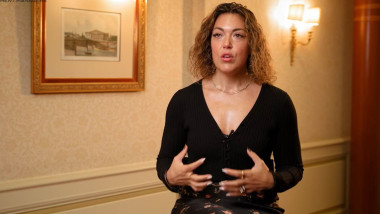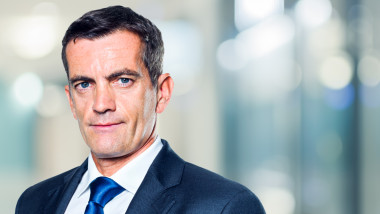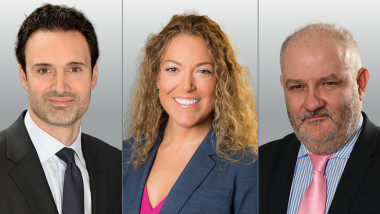3 minutes with… Matthieu Mouly, Ostrum AM

|
|---|
In my view, the biggest hidden risk in a portfolio today is a carbon one.”
When did you first become interested in the whole area of sustainable investing?
It was a day when I realized that I could have an impact, even a very small one, on climate change through my job. It happened in 2020 in a previous professional experience when I launched the first ETF tracking Paris-Aligned benchmarks and climate transition benchmark, offering all investors simple investment support following a decarbonation pathway aiming at reaching Net Zero by 2050.
In what way does sustainability play an important part in your role at Ostrum AM?
My primary role is to offer to our clients both products and services that deliver consistent performance over time. Though I strongly believe that an asset manager cannot deliver consistent performance if it does not take into account the sustainable aspects. Because everything that is linked to climate and biodiversity is an off-balance sheet risk. I am convinced that this risk will integrate the balance sheet and impact the profit and loss of the company in the coming years.
Why do these issues continue to motivate you?
It’s a way for me to try to have, even if it’s only in a small way, a positive impact towards human beings and the wider population. Tackling climate change is more than an objective in my view, it’s a duty. I believe that working in the financial industry with a big firm gives us the opportunity to have an impact. While engaging to push firms to reduce their carbon emissions through transition policies, I think we are doing our duty. Finance clearly has an important role to play. Moreover, for the first time, Europe is ahead of the US in the asset management industry from a regulatory and expertise perspective, while leading the way in the sustainable space.
What makes Ostrum AM credible in terms of sustainable investing?
In my view, the bulk of our clients, the French insurance companies, are among the most advanced investors in the sustainability and climate change fields. They are becoming ever more discerning, too, which we believe puts us at a distinct advantage.
After all, Ostrum AM has been managing over €100 billion invested in credit and equities in a decarbonation pathway for five years. Sustainable bonds in particular are crucial in helping to bridge the huge investment gap required to meet the targets set out in the 2015 Paris Agreement on Climate Change and the 2015 UN Sustainable Development Goals.
We have also strengthened our engagement with companies on climate change in a quite ambitious manner. In total, I think we're among the most advanced institutional asset managers on all these subjects.
A recent Natixis survey of global fund selectors highlighted the continued interest in green bonds. Do you share their optimism?
I think we’re aligned, yes. I mean, we are managing more and more green bonds for our clients. We’ve invested in €35 billion of green, social, sustainability and sustainability-linked bonds to date.
And, as I said, we see clients becoming ever more discerning. The use of proceeds of green bonds aims to have a positive impact on the environment – a prerequisite for the bond to be considered green. But there’s the tricky question about how impact and the shade of green is verified. Do all green bonds have the same impacts? Are they all as green as they should be?
We have a team dedicated to green bonds, whose role is to rate all green bonds to make sure that the use of proceeds is done in a proper manner. Because we know that not all so-called green bonds genuinely finance green projects. That’s why the ability to assess properly the use of proceeds and the positive impact of every single green bond makes the investment even more robust.
It’s also why we have developed specific expertise within Ostrum AM in assessing and rating sustainable bonds – including green, social and sustainability bonds – as well as transition bonds and sustainability-linked bonds.
How do you explain financial performance alongside the sustainable returns generated by specific investments?
When oil price is up and all oil companies deliver good profits, sustainable approaches underperform. Is it a reason to buy again all these companies? I don't think so. It may be on the contrary the right time for our clients to increase their exposure to decarbonization and transition.
Put bluntly, the world is not changing as fast as it should be when it comes to climate and carbon emissions. At Ostrum AM, we are convinced that it’s our duty to support investors in their transition journey from brown to green assets – in particular in today’s adverse context when some oil companies are demonstrating strong financial performance – and to help them to continue to decarbonise their portfolio.
Even if this could have a short-term negative impact on performance, we and our institutional clients keep a long-term view on the markets. We have the conviction that taking into account all the sustainable climate carbon components will result in a positive long-term impact on the performance of their portfolio.
In my view, the biggest hidden risk in a portfolio today is a carbon one. Many investors have a significant exposure to carbon emitters. Carbon emissions are like a hidden debt, which is not priced in by today’s markets, but will be tomorrow. So, mind the carbon gap. Indeed, helping our clients to mind the carbon gap in their portfolio is our duty.
Written on 21 February 2024
DR-62776)





 All back to bonds?
All back to bonds?
 Fixed Income: Watch out for the tail risk of geopolitics
Fixed Income: Watch out for the tail risk of geopolitics
 Global Corporate Bonds – Attractive Yields but Thin Risk Premium
Global Corporate Bonds – Attractive Yields but Thin Risk Premium